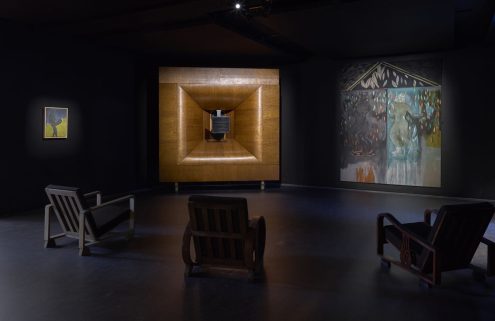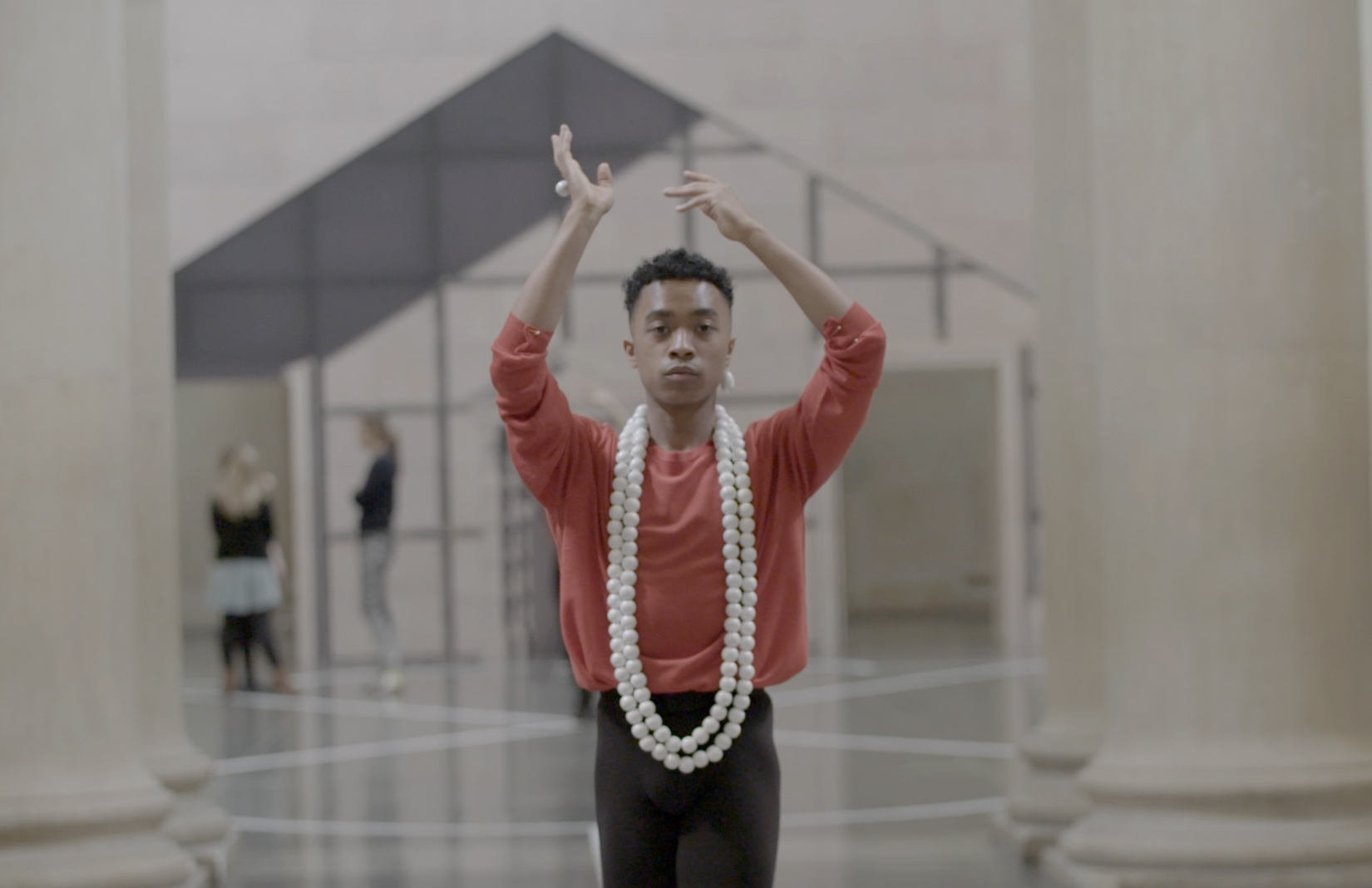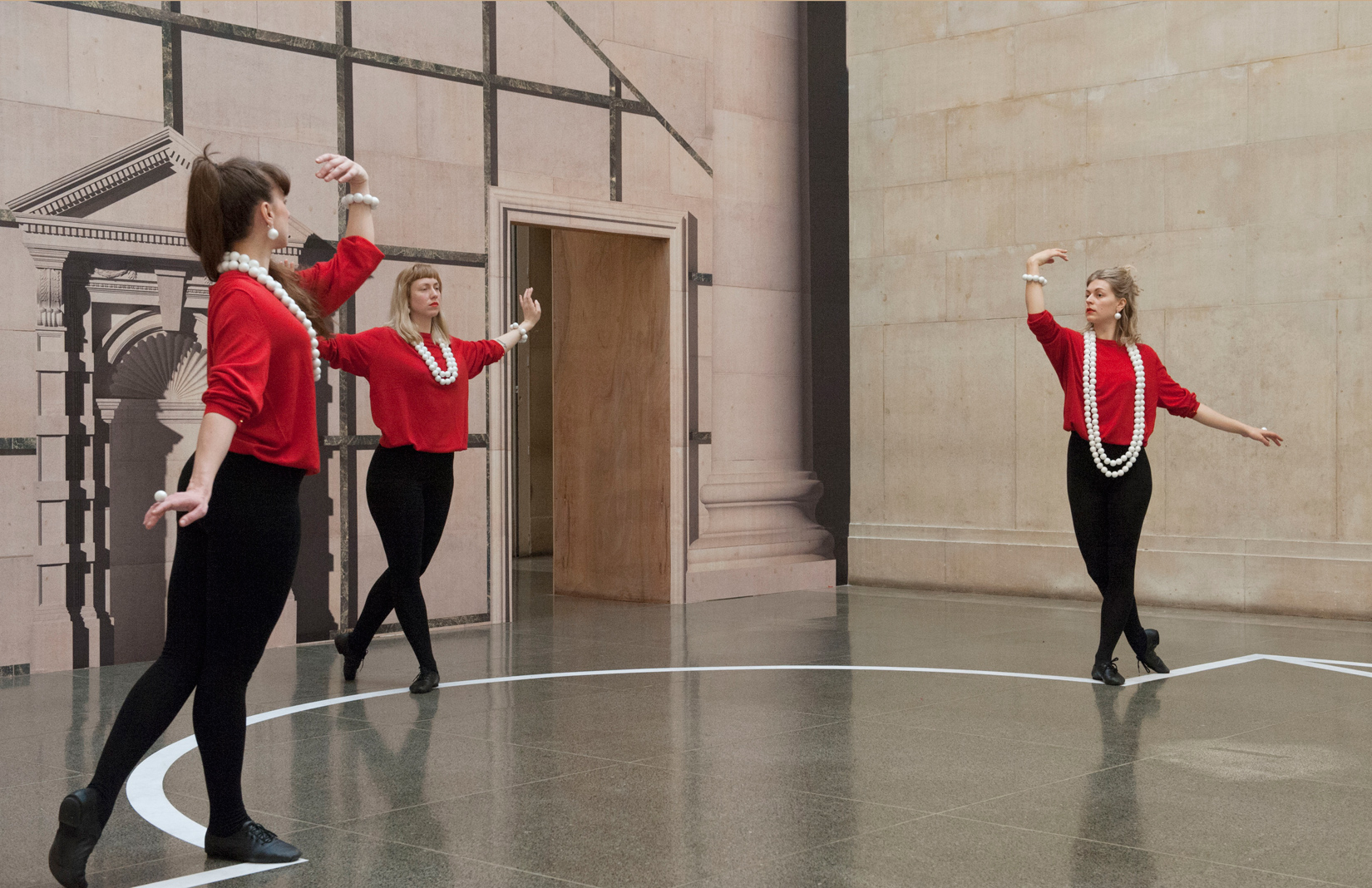
Artist Pablo Bronstein has created a fantastical inside-out version of Tate Britain as the setting for his continuous performance work, Historical Dances in An Antique Setting.
Reworked 3D renderings of the museum’s front and rear façades – designed respectively by Sidney E J Smith and James Stirling – have been printed onto vast stage flats that fill the width of its central Duveen galleries, subtly stunting its length.
‘The idea is to suck Tate out from its own arsehole,’ says Bronstein of his inverted set. ‘You walk in through a manoeuvred version of the Clore extension to see the front façade on Millbank.’
Over the next six months this manipulated Tate-within-a-Tate will act as the theatre set for a tag team of 12 dancers led by Rosalie Wahlfrid. Trios of dancers will perform choreography referencing 16th-century courtliness, ballet and Vogueing developed during an on site two-week residency. Led by shapes painted on the floor by Bronstein, the dance responds both to the architecture of the space and his interest in anachronism, pre-modern architecture and etiquette.
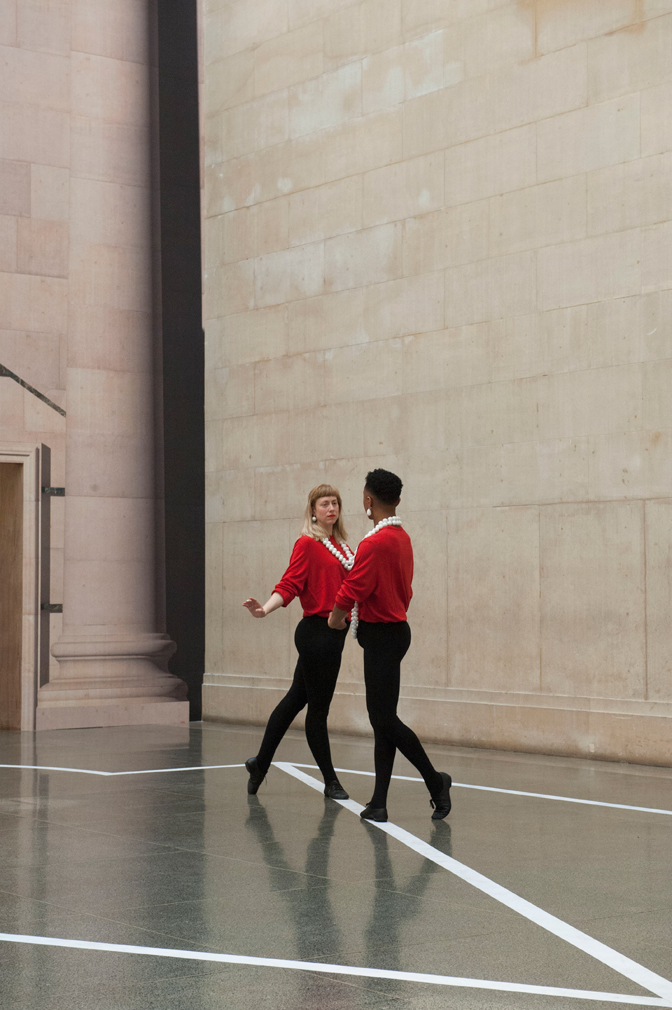
Pablo Bronstein’s
Historical Dances in an Antique Setting, 2016. Photograph: BrothertonLock © Pablo Bronstein. Courtesy of Tate Media
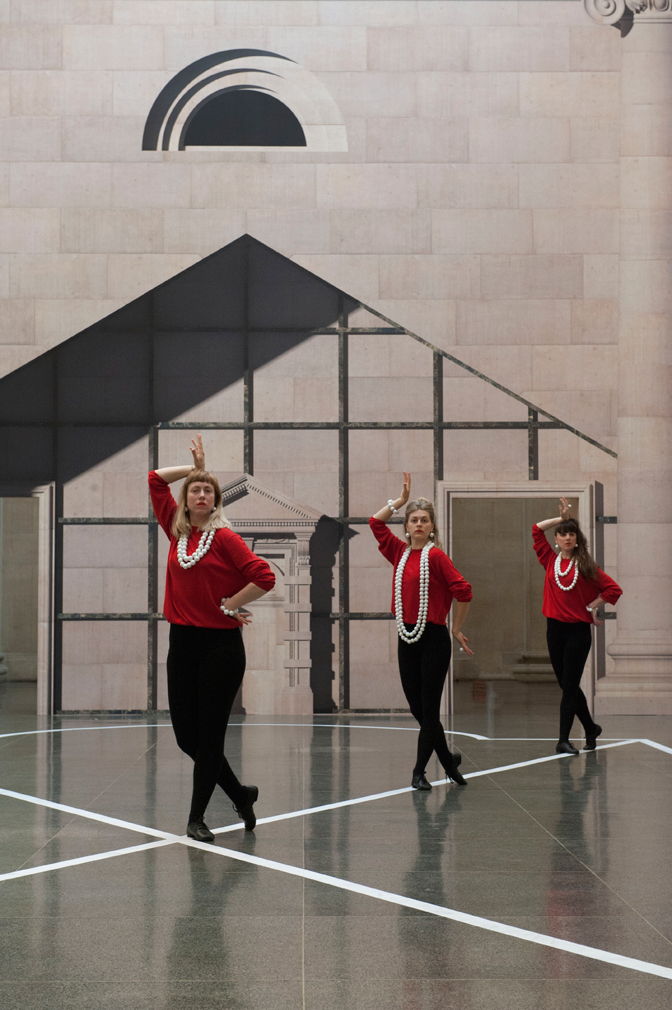
Pablo Bronstein’s
Historical Dances in an Antique Setting, 2016. Photograph: BrothertonLock © Pablo Bronstein. Courtesy of Tate Media

Pablo Bronstein’s
Historical Dances in an Antique Setting, 2016. Photograph: BrothertonLock © Pablo Bronstein. Courtesy of Tate Media
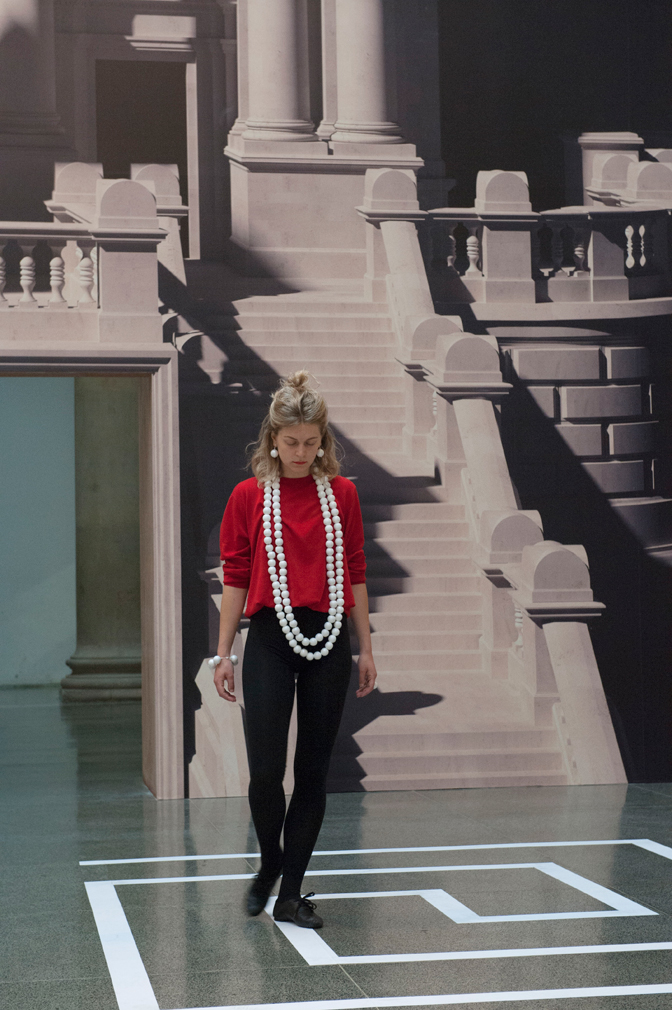
Pablo Bronstein’s
Historical Dances in an Antique Setting, 2016. Photograph: BrothertonLock © Pablo Bronstein. Courtesy of Tate Media
‘The space is a falsified historical space, and I brought in the movement as an equivalent – the dancers move in a comparable way,’ explains Bronstein. ‘It’s a bit of a statement on the architecture and the fiddles you find in very severe spaces – the Duveen galleries are very brutal spaces that have these little flourishes.’
Drawing on the work of choreographers that were ‘very architecturally aware’, including Balanchine and Tricia Brown, Historical Dances in An Antique Setting examines how the moving body is ‘treated straightforwardly as an architectural marker – it shows how long a space is or highlights its particular features’.
To compensate for what Bronstein calls the ‘really grim and dark’ galleries, he dressed the dancers in contemporary red sweaters as well as classical ballet tights. Their movements are accentuated with outsized beaded necklaces, bracelets and rings, which not only offer points of focus, but also lend their interaction in the galleries the air of 1980s power lunch.
The patterns marked in tape on the gallery floors include a Greek key (or meander) around which the dancers proceed at a stately pace, a central Octagon in which they perform short solos, and a promenading space in the front gallery.
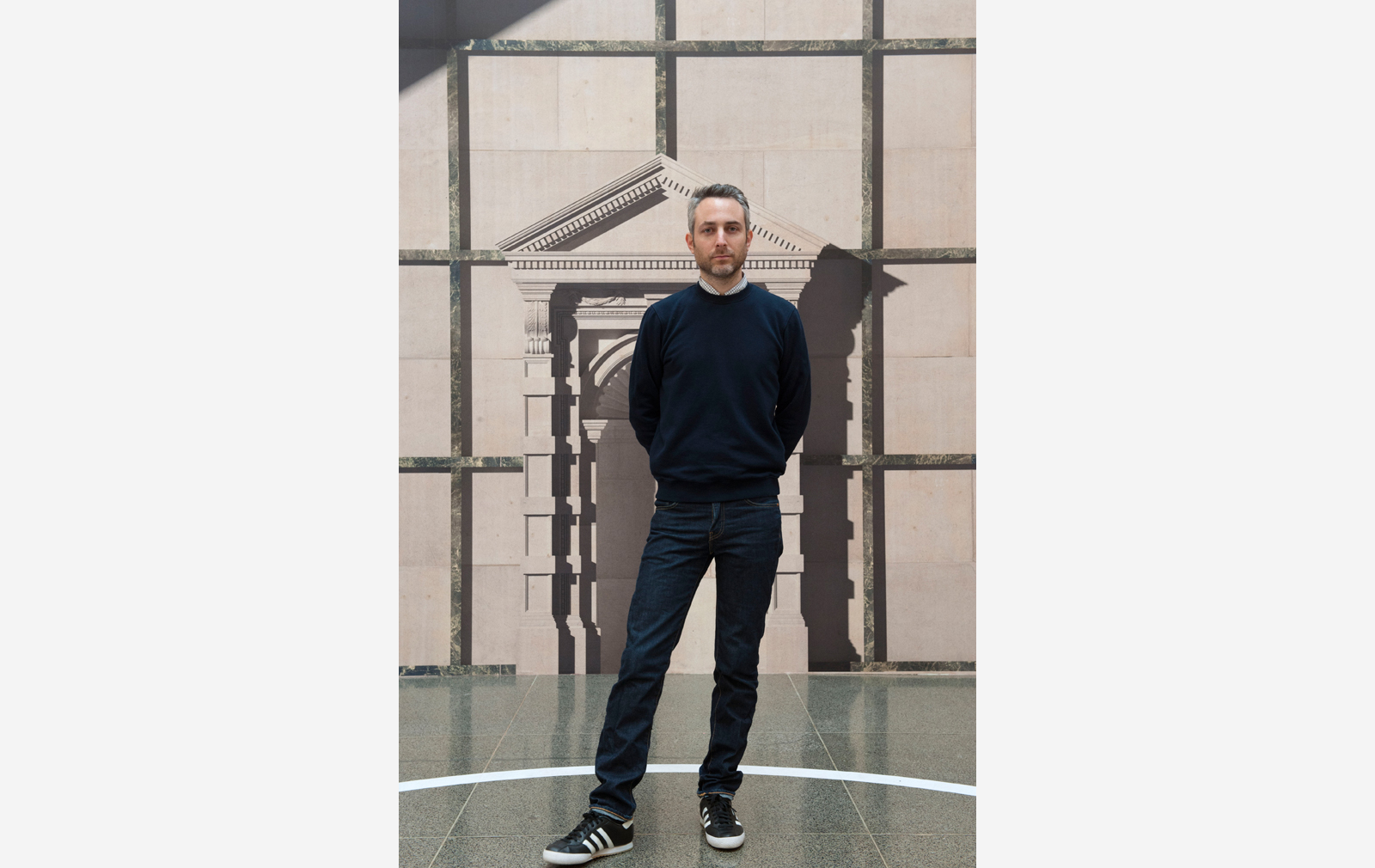
For these designs and the choreography within them Bronstein drew inspiration from diverse sources, including Baroque pleasure gardens, Bruce Nauman’s video work Walking in an Exaggerated Manner Around the Perimeter of a Square (1967-68) and the opening sequence of Ken Russell’s The Devils (1971), in which Louis XIII appears as Botticelli’s Venus on a mechanical 17-century stage set.
Pablo Bronstein, ‘Historical Dances in An Antique Setting’ is at Tate Britain through 9 October

